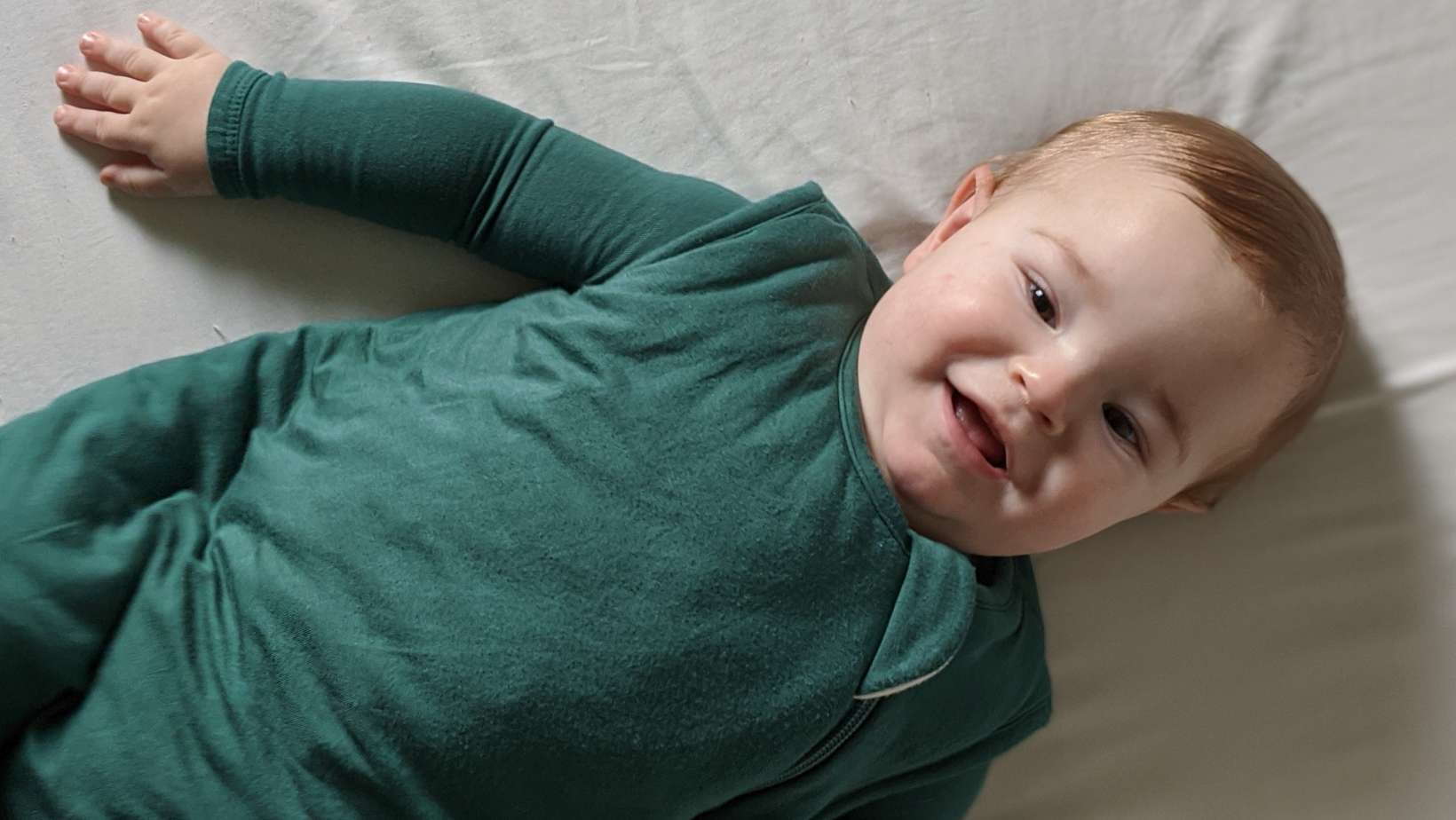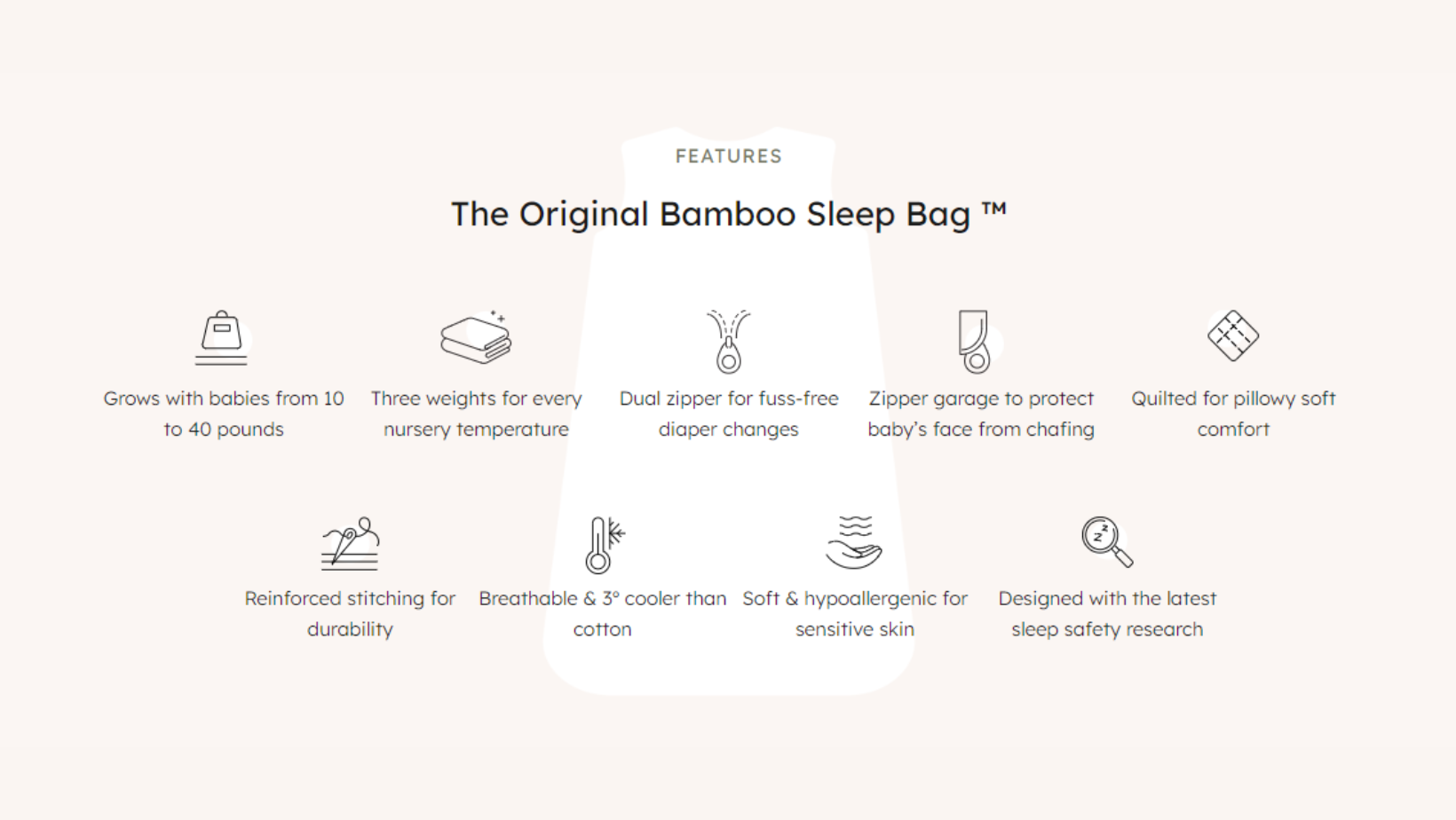Need a new bedtime strategy?
- Posted on
- By @shopkicksandgiggles
- 0
Will the sleep bag work in your bedtime routine? Harris thinks it will!

We brought in our first sleep bag from Kyte Baby in 2019. At this time, Taylor's son Harris (pictured above) was about 7 months old and looking for some extra comfort during his bedtime routine. After only a few days, it became the perfect "bedtime cue" for Harris. We started to form a predictable routine and the sleep bag was a safe way to cue and comfort him during this time. Harris continued to use his sleep bag until he was 18 months old!
Here are a few more reasons why the Kyte sleep bag might be right for you. Written by Kyte Baby content creator Alice Mendoza.
- It reduces the risk of SIDS. Keeping your baby warm is essential to their health, especially because babies are unable to regulate their body temperature. Although loose blankets pose a major safety hazard, using a wearable one like our sleep bag is a way to keep them safe, warm, and cozy. It gives your baby the security and comfort of a blanket, but eliminates the suffocation risk.
- It acts as a bedtime cue. Children thrive off routine, and a bedtime routine is incredibly important for their sleep quality. Before they can comprehend words, babies learn through action. Having a predictable bedtime routine teaches them that the steps leading toward bedtime means it’s time to go to sleep. Zipping your baby up into their sleep bag creates an incredibly strong sleep association that sticks through disturbances or transitional periods, like teething and sleep regressions.
- It prevents your child from getting tangled in the crib slats. Using a crib bumper is a big no-no before 12 months of age, but they were commonly used before the 90s to prevent babies’ heads and limbs from falling through the crib slats. Some babies, especially those who move around a lot in their sleep, may wake from getting their foot stuck between the slats. It’s not uncommon, and many adapt, but using a sleep bag protects those little legs from flailing and getting stuck.
- It deters your child from climbing out of the crib. If you’ve got a climber on your hands, this is a big benefit. Once children become mobile, the growth is exponential. One day they’re crawling, then they’re walking, climbing, and testing their limits—and your patience. Any attempts to climb out their crib (successful or not) isn’t something to ignore. It’s dangerous and can lead to injuries. If your little one isn’t ready to transition from a crib to a bed, using a sleep bag can be a saving grace here. It discourages climbing because your child is limited in their ability to lift their leg over the crib rail.
- It prevents your child from taking off their diaper. Ah, the lovely age when your little one figures out how to remove their own diaper. There’s nothing quite like checking in on your sleeping, angelic (or, so you thought) baby in their crib and discovering that not only are they bare-bottomed, but that the sheets are wet. It’s an unpleasant time for any parent, and, unfortunately, not uncommon. Although this could be a sign that they’re ready to potty train, babies and toddlers do it for the sheer novelty. Once again, a sleep bag comes to the rescue. If your little one can’t get to their diaper, they certainly can’t remove it.

Here is some info from Kyte Baby on picking the right size of sleep bag.
"It’s absolutely okay to choose a sleep bag that is longer than your baby needs so long as it fits well through their chest, arms, and neck. We don’t want it so large that it can be pulled up to cover their face or that they can pull their arms out through the arm holes easily.
But there’s no issue with the sleep bag being longer, and in fact can be preferable to ensure they have lots of mobility and freedom for their hips!"

Comments
Be the first to comment...